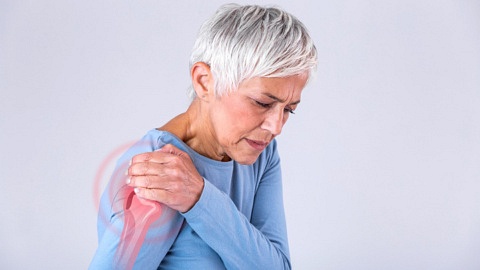Inflammation is the body’s response to an unwanted stimuli. This response is mediated primarily by the immune system. The main objective of an inflammatory...
Why Does the Cold Weather Make Your Joints Hurt?
It is an automatic association, when it’s cold outside most symptoms tend to feel worse. You all know people who can predict a storm coming hours before it happens, just by ‘feeling’ it in their joints ahead of time. Whether it is your arthritis, your headaches, or your mood, it’s a common sentiment and experience that weather affects your body, but why? There are two theories to try and understand why joint-related weather sensitivity happens and I will describe it from the perspective of a naturopathic doctor with some useful tips.
One generalized theory relates to simple tissue-related sensitivity to temperature. Muscles contract when there is cold exposure. These tight muscles will then squeeze the deeper structures such as your nerves and your blood vessels. If your nerves are squeezed, you will feel more symptoms, and if the blood supply is reduced to your joints, it will get less nutrition in and less wastes out of the area. It only makes sense then that you will feel more stiffness and pain. Based on experience, those with cold-sensitive joint pain tend to benefit from things that warm them. Some examples include wearing more layers of clothing, or using hot packs, warm water baths or the use of a sauna. I often recommend adding rosemary oil to a moist hot towel and apply onto aching joints. A particular form of acupuncture that includes heating the needle is also very helpful to reduce joint stiffness and pain and improves mobility. Exercise can also be beneficial since it warms the muscles and gets the blood flowing, the most gentle being walking and pool exercises or swimming. Include warming spices in your food, such as cinnamon, ginger, chili, nutmeg and allspice, to help warm you from the inside out.
Another predominant theory attributes weather-related joint pain to air pressure (barometric pressure changes in the atmosphere). Researchers at Harvard Medical School compared the impacts of weather on pain sufferers in four different cities in the United States: San Diego, California; Nashville, Tennessee; Worcester, Massachusetts; and Boston, Massachusetts. The study found that about two-thirds of pain sufferers were affected by weather changes, particularly by cold-damp weather and often before and during weather changes. However, the research concluded that it was not actually the temperature but the air pressure in the environment that related to their symptoms. Barometric pressure represents the weight of the atmosphere that surrounds you. Imagine the tissues surrounding the joints to be like a balloon; high barometric pressure pushes against the body from the outside and keeps the tissues from expanding. Whereas when barometric pressure drops, as when a storm comes in, there is less pressure to contain the body and this allows tissues to expand which puts more pressure on the joint. Interestingly, the study participants in the warmer climate of San Diego were actually found to be the most sensitive to weather changes. One useful tip to keep in mind is that despite the benefits of warming an achey joint, if the joint swells, applying pressure may be of particular benefit, such as wearing spandex gloves at night if you suffer pain with swollen hand joints.
Keep in mind that when there is chronic pain, nerves can be particularly sensitive, related to a past injury, inflammation, scar tissue, or adhesions among the tissues in the area. These are the joints that tend to be most weather-sensitive. Some supplements that can be useful are omega-3 fats (such as flaxseed, chia seed and fish oils) and glucosamine that can help ‘smooth out’ these surfaces and reduce the inflammation and degradation in the area.
Related Posts
Gout
classified as a joint condition categorized alongside osteoarthritis,
rheumatoid arthritis and others. However it is uniquely different with respect
to...
Your immune system is a complex network of different cells with a range of signals that help guide the proper upkeep of your entire body. Most are familiar...
Gout classified as a joint condition categorized alongside osteoarthritis, rheumatoid arthritis and others. However it is uniquely different with respect to...
Your immune system is a complex network of different cells with a range of signals that help guide the proper upkeep of your entire body. Most are familiar...
Categories
- Allergy Relief
- Bell Lifestyle News
- Brain and Vision Health
- Depression
- Digestive Health
- Eating Healthy
- Energy Boosts
- Fitness
- Foods for Energy
- Heart and Lung Health
- Herbs
- Immune System Support
- Lifestyle
- Men's Health
- Mental
- Motivation
- Natural Remedies
- Nutrition
- Pain Relief
- Physical
- Recipes
- Relationships
- Sexual Health
- Skin and Hair Health
- Sleep Health
- Social
- Stress Relief
- Uncategorised
- Videos
- Weight Management
- Women's Health
- Your Wellness Now
Follow us on Twitter
#90 Bladder One for Women™ is a convenient one-a-day capsule for urinary tract health, featuring herbal extracts in… twitter.com/i/web/status/1…
May 2023Urinary tract infections - UTI: To treat or prevent? That is the question. Find out more about causes and treatme… twitter.com/i/web/status/1…
May 2023"How you feel is very important to how you look. Healthy equals beautiful." - Victoria Principal #womenshealth https://t.co/OPShoEbOXb
May 2023
© Copyright 2025. All rights reserved.




